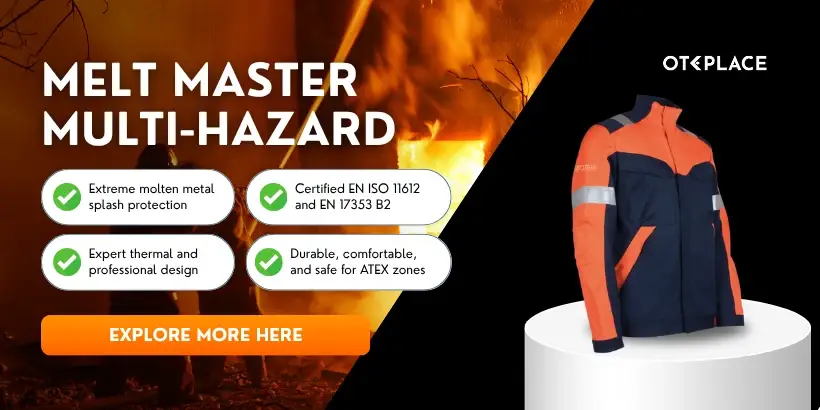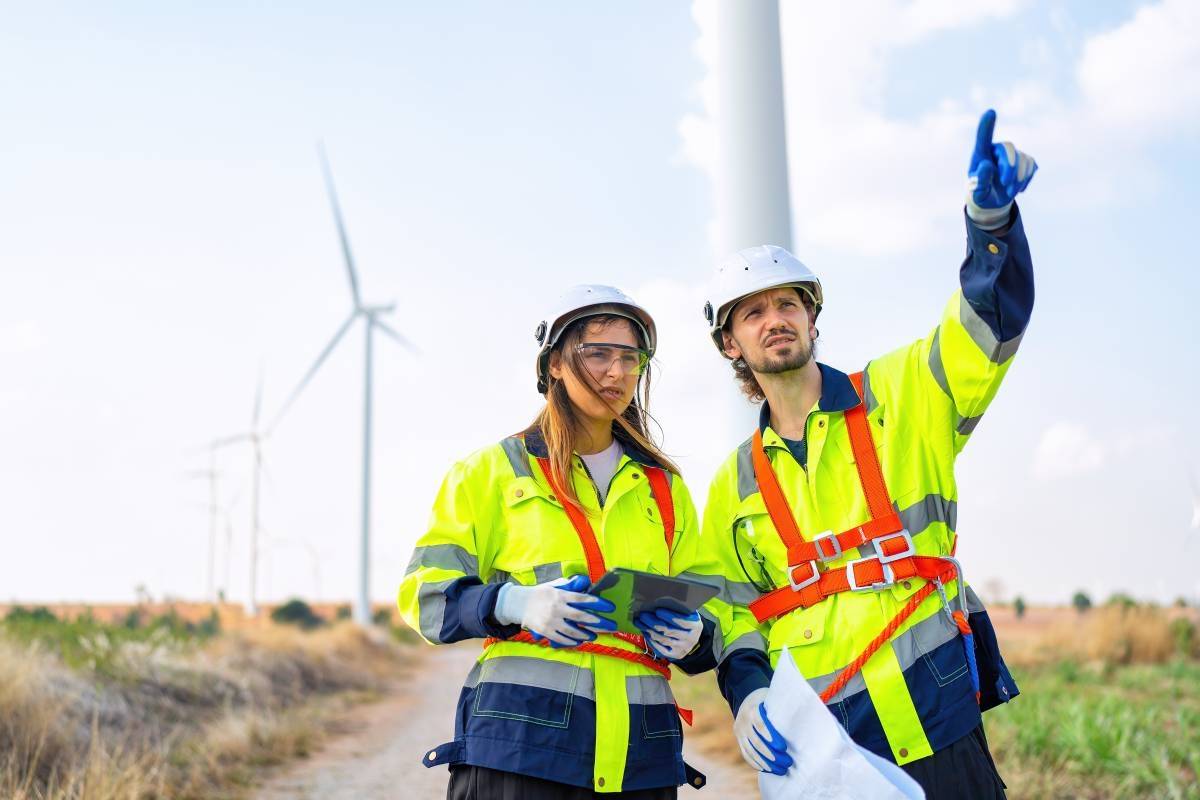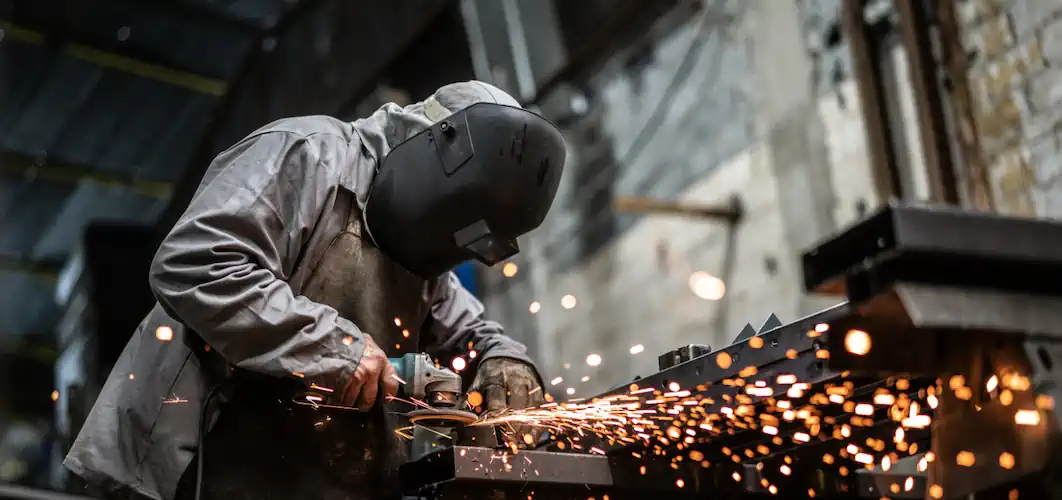PPE for Renewable Energy Safety: A Guide for Wind, Solar, and Nuclear Industries
As the renewable energy sector expands, so does the responsibility of protecting technicians working in wind, solar, and nuclear environments. From high-altitude turbine maintenance to radiation-controlled zones, the risks are substantial, and selecting the right personal protective equipment (PPE) is essential to ensure safety and operational continuity.
This guide outlines the sector-specific PPE for renewable energy safety, helping procurement managers choose gear that meets both technical standards and budget constraints.

Table of Contents
Comon Safety and Health Challenges in the Renewable Energy Industry
Each renewable energy sector presents distinct safety challenges that demand specialized PPE to protect workers and ensure regulatory compliance.
- Wind technicians: Wind technicians face heights, moving mechanical parts, and high-voltage systems in adverse weather.
- Solar installers: Solar installers work long hours under intense sun exposure, often on rooftops with live circuits.
- Nuclear energy workers: Nuclear energy workers operate in environments where radiation, chemical exposure, and heat require specialized safeguards.
PPE serves as the frontline defense across all these environments, reducing injuries, enhancing safety, and helping employers comply with stringent health and environmental standards.

Regulatory Compliance: A Priority for Renewable Energy Projects
Staying compliant with local and international PPE regulations isn’t just about safety, it’s about operational stability. Regulatory infractions can trigger project shutdowns, lawsuits, or brand damage.
Key Standards by Sector
- Wind Energy: OSHA 1910.269 (U.S.), HSE Work at Height Regulations (UK) – mandates include fall protection and arc-rated PPE.
- Solar Energy: NFPA 70E, IEC 61482-2 – focused on arc flash, flame resistance, and UV protection.
- Nuclear Energy: IAEA Safety Standards, OSHA 1910.120 – mandates dosimetry, chemical resistance, and respiratory safeguards.
Procurement leaders must ensure all gear is certified and meets these standards.

Wind Turbine PPE: Equipment for Height, Electricity, and Weather
Fall Protection
Technicians often climb turbines over 300 feet or 91 meters tall. One slip without proper gear can be fatal.
Recommended Safety Equipment:
- Full-body harnesses: Adjustable, ergonomic designs distribute weight evenly to prevent fatigue during long climbs.
- Self-retracting lifelines (SRLs): Automatically adjust length to minimize fall distance, reducing impact forces.
- Shock-absorbing lanyards: Internal energy-absorbing systems slow down falls to reduce the risk of injury.
- Climbing helmets with chin straps: Secure fit prevents loss during sudden movements or high winds.
- Suspension trauma relief straps: Reduce pressure on legs if a worker is left hanging after a fall.
Electrical Protection
High-voltage systems require arc-rated and non-conductive PPE.
Recommended Safety Equipment:
- Insulated gloves (Class 0-4): Rated for different voltage levels to prevent electric shock.
- Arc-rated shirts and coveralls: Flame-resistant fabrics protect against arc flash burns.
- Non-conductive boots: Made from rubber or composite materials to prevent grounding.
- Voltage-rated tools: Insulated handles prevent accidental contact with live circuits.
- Face shields with arc flash rating: Shields against heat, sparks, and flying debris during electrical work.
Cold Weather Protection
Many wind farms operate in freezing temperatures.
Recommended Safety Equipment:
- Insulated thermal coveralls: Insulated, windproof, and waterproof to retain body heat.
- Heated gloves and socks: Built-in heating elements prevent frostbite.
- Moisture-wicking base layers: Keep sweat from freezing on the skin.
- Windproof face masks and balaclavas: Protect against frostbite and windburn.
- Anti-fog safety goggles: Prevent vision impairment in cold conditions.
Hand Protection
Work involves electrical, mechanical, and climbing-related tasks.
Recommended Safety Equipment:
- Cut-resistant gloves: Reinforced with Kevlar or HPPE fibers to prevent lacerations.
- Impact-resistant gloves: Shock-absorbing padding reduces hand injuries from heavy tools.
- Oil-resistant gloves: Provide grip while handling lubricants and machine components.
Solar Energy PPE: Protection Against Heat, Voltage, and Heights
Electrical Safety
Solar panels generate direct current (DC) electricity, which can cause severe shocks. In addition to electrical hazards, solar energy workers may also work in confined spaces, requiring specialized safety gear and protocols.
Recommended PPE:
- Insulated rubber gloves (Class 0-1): Rated for up to 7,500V DC.
- Fire-resistant shirts and pants: Reduce fire risks from electrical sparks.
- Arc flash-rated coveralls: Protect against intense heat and electrical discharge.
- Dielectric footwear: Prevents electrical grounding and reduces shock risk.
- Insulated hand tools: Reduce contact with live circuits.
Heat and UV Protection
Prolonged exposure to sunlight increases dehydration, skin damage, and eye strain.
Recommended PPE:
- Cooling vests: Lightweight, moisture-activated fabrics help regulate body temperature.
- UV-rated safety glasses or sunglasses: Protect eyes from prolonged exposure to intense sunlight.
- Wide-brimmed hats and neck shades: Reduce sun exposure on the face and neck.
- Breathable, UV-protective shirts: Prevent skin damage while keeping workers cool.
Hand and Eye Protection
Glass edges and mounting structures pose cut and eye injury risks.
Recommended PPE:
- Cut-resistant gloves: Prevent injuries while handling panels and mounting structures.
- Dust-proof safety glasses with side shields: Protect eyes from dust and debris.
- Anti-reflective lenses for glare reduction: Reduce glare from reflective surfaces.
Nuclear Energy PPE: Radiation, Chemicals, and High-Risk Environments
Radiation Protection
Radiation exposure requires constant monitoring and barrier protection.
Recommended Safety Equipment:
- Radiation-resistant suits: Lead-lined or polymer-coated suits block harmful radiation.
- Dosimeters (real-time radiation trackers): Monitor real-time radiation exposure levels.
- Lead aprons and shields: Reduce exposure when handling radioactive materials.
- Radiation-blocking eyewear: Protects eyes from harmful radiation waves.
Respiratory Protection
Toxic gases and radioactive particles pose inhalation risks.
Recommended Safety Equipment:
- Full-face respirators: Protect against inhaling radioactive dust.
- Powered air-purifying respirators (PAPRs): Provide clean airflow in contaminated areas.
- Self-contained breathing apparatus (SCBA): Essential for emergency evacuations in high-risk zones.
Fire and Chemical Safety
Chemical handling and high heat call for flame and chemical-resistant gear.
Recommended Safety Equipment:
- Chemical-resistant gloves (nitrile, butyl, neoprene): Protect against corrosive substances.
- Face shields and splash goggles: Prevent eye injuries from chemical splashes.
- Flame-resistant coveralls: Reduce fire hazards in case of flammable chemical leaks.
- Chemical-resistant boots: Prevent exposure to hazardous spills.
Prioritizing Renewable Energy Safety Programs with Proper PPE
Choosing the right PPE isn't just about fulfilling safety protocols, it's about ensuring operational efficiency and protecting lives. Each renewable energy sector presents unique risks, and procurement decisions must reflect these distinct needs.
Procurement managers play a central role in:
- Ensuring equipment meets current safety regulations
- Conducting periodic PPE audits
- Evaluating evolving hazards as technology advances
- Prioritizing gear from certified, industry-specific suppliers
As the renewable energy industry grows, so does the need for smarter, safer, and more responsive safety programs. Investing in purpose-built PPE now supports a resilient and protected workforce for the long term.



































